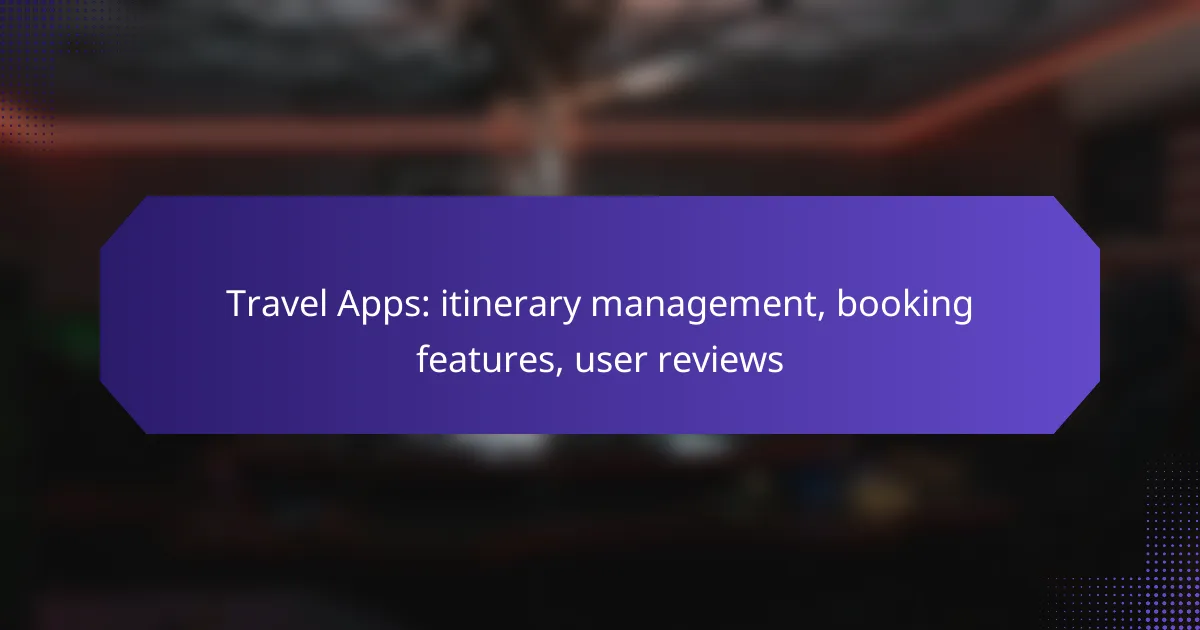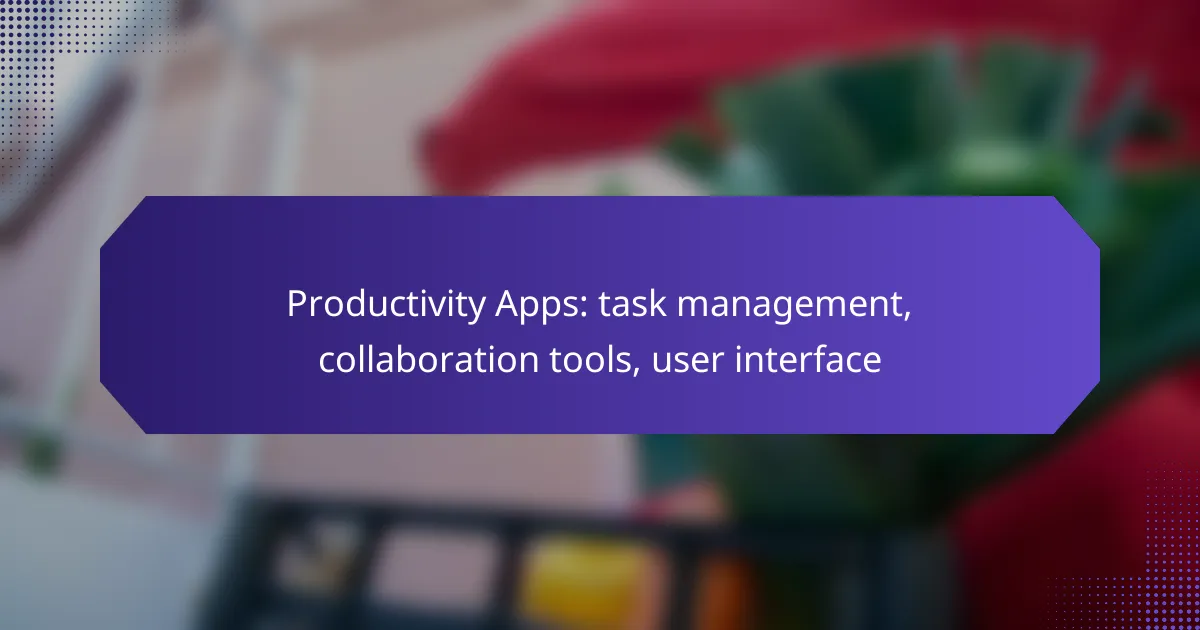Gaming apps are revolutionizing the industry by enhancing graphics quality through advanced rendering techniques and high-resolution textures, providing players with stunning visual experiences. To maintain user engagement, developers employ immersive strategies such as social features and regular content updates, ensuring players remain invested in the game. Additionally, effective monetization strategies, including in-app purchases and subscription models, play a crucial role in balancing profitability with user satisfaction.
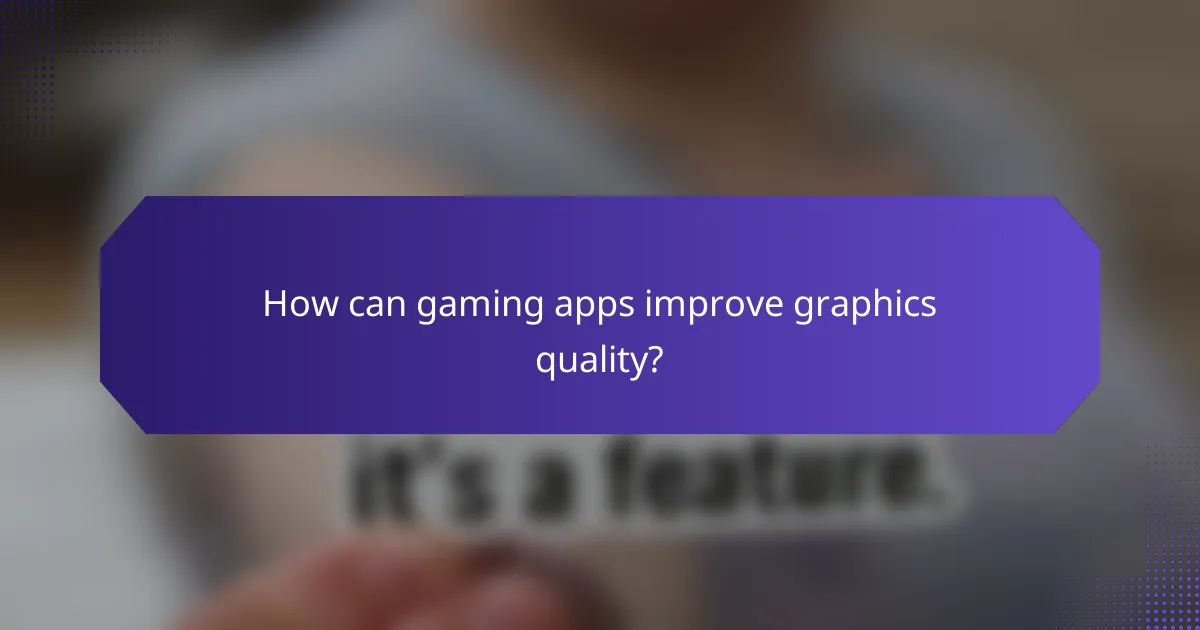
How can gaming apps improve graphics quality?
Gaming apps can enhance graphics quality by leveraging modern technologies and techniques that elevate visual fidelity and user experience. Key strategies include utilizing advanced rendering techniques, implementing high-resolution textures, adopting real-time ray tracing, and optimizing performance for mobile devices.
Utilizing advanced rendering techniques
Advanced rendering techniques, such as physically-based rendering (PBR) and deferred shading, can significantly improve the realism of graphics in gaming apps. PBR simulates how light interacts with surfaces, allowing for more accurate reflections and materials.
Developers should consider using shaders and post-processing effects to enhance visual appeal. Techniques like ambient occlusion and screen space reflections can add depth and realism, making environments feel more immersive.
Implementing high-resolution textures
High-resolution textures are crucial for achieving detailed visuals in gaming apps. Textures with higher pixel counts provide more detail, which is especially noticeable on larger screens or when players zoom in on objects.
To effectively implement high-resolution textures, developers should balance quality with performance. Using texture atlases can help reduce draw calls, while mipmapping can ensure that lower-resolution textures are used when objects are far away, optimizing resource usage.
Adopting real-time ray tracing
Real-time ray tracing enhances graphics quality by simulating the way light behaves in the real world, resulting in more realistic lighting, shadows, and reflections. This technology can create stunning visual effects that significantly improve user engagement.
However, implementing ray tracing requires powerful hardware and can impact performance. Developers should consider offering settings that allow users to toggle ray tracing on or off based on their device capabilities, ensuring a smooth experience across various platforms.
Optimizing performance for mobile devices
Optimizing graphics performance for mobile devices is essential, as these devices have limited processing power compared to consoles or PCs. Techniques such as level of detail (LOD) management and efficient asset loading can help maintain high frame rates while delivering quality graphics.
Developers should also consider using adaptive resolution techniques, where the resolution dynamically adjusts based on the device’s performance. This approach ensures that users experience smooth gameplay without sacrificing visual quality excessively.
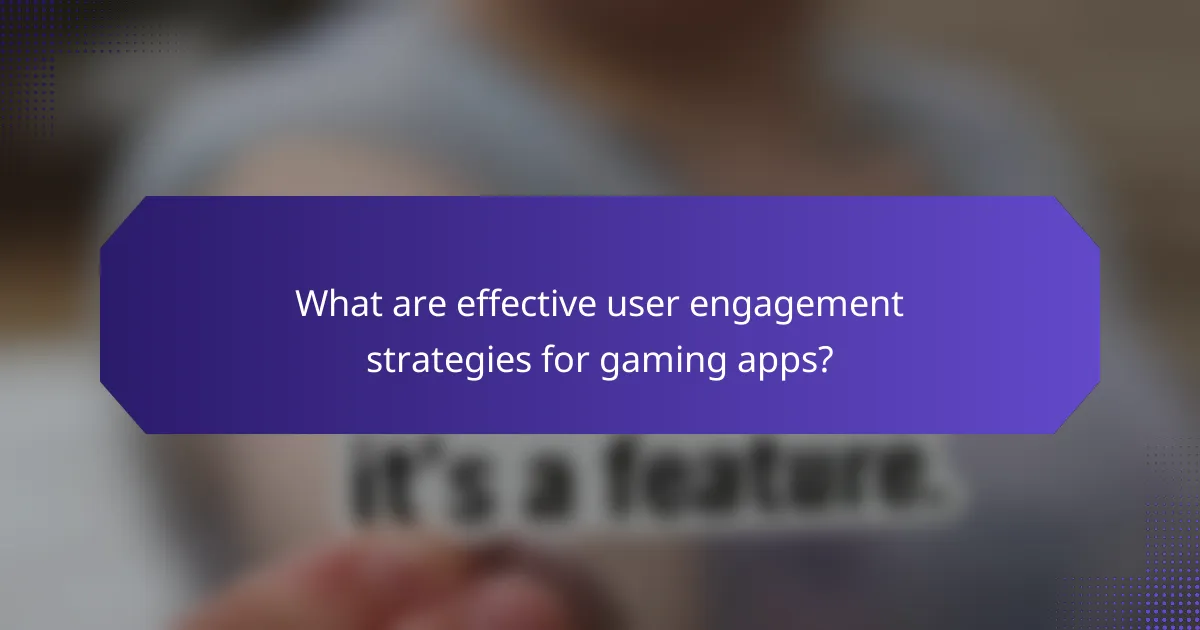
What are effective user engagement strategies for gaming apps?
Effective user engagement strategies for gaming apps focus on creating immersive experiences that keep players returning. These strategies often include social features, regular content updates, gamification techniques, and user feedback loops to enhance interaction and satisfaction.
Incorporating social features
Integrating social features into gaming apps can significantly boost user engagement. Options include allowing players to connect with friends, share achievements, and participate in multiplayer modes. These elements foster a sense of community and competition, encouraging users to spend more time in the app.
Examples of social features include leaderboards, in-game chat, and social media sharing options. Implementing these can lead to increased retention rates as players are motivated to interact with their peers.
Offering regular content updates
Regular content updates keep gaming apps fresh and exciting for users. This can involve introducing new levels, characters, or game modes on a consistent schedule, such as monthly or quarterly updates. Keeping content dynamic helps maintain user interest and encourages ongoing engagement.
Consider seasonal events or themed updates to capitalize on holidays or trends, which can attract both returning and new players. A well-planned update strategy can lead to spikes in user activity and monetization opportunities.
Utilizing gamification techniques
Gamification techniques enhance user engagement by incorporating game-like elements into the app experience. This may include rewards systems, challenges, and achievements that motivate users to complete tasks or reach milestones. These elements can make the app experience more enjoyable and addictive.
For instance, implementing daily challenges with rewards can encourage users to log in regularly. It’s essential to balance challenges with achievable goals to avoid frustrating players and ensure sustained interest.
Implementing user feedback loops
User feedback loops are crucial for understanding player preferences and improving the gaming experience. This involves actively soliciting feedback through in-app surveys, reviews, or community forums and then implementing changes based on that feedback. Engaging users in this way makes them feel valued and heard.
Consider using analytics tools to track user behavior and identify areas for improvement. Regularly updating users on how their feedback has shaped the app can strengthen loyalty and encourage ongoing participation.
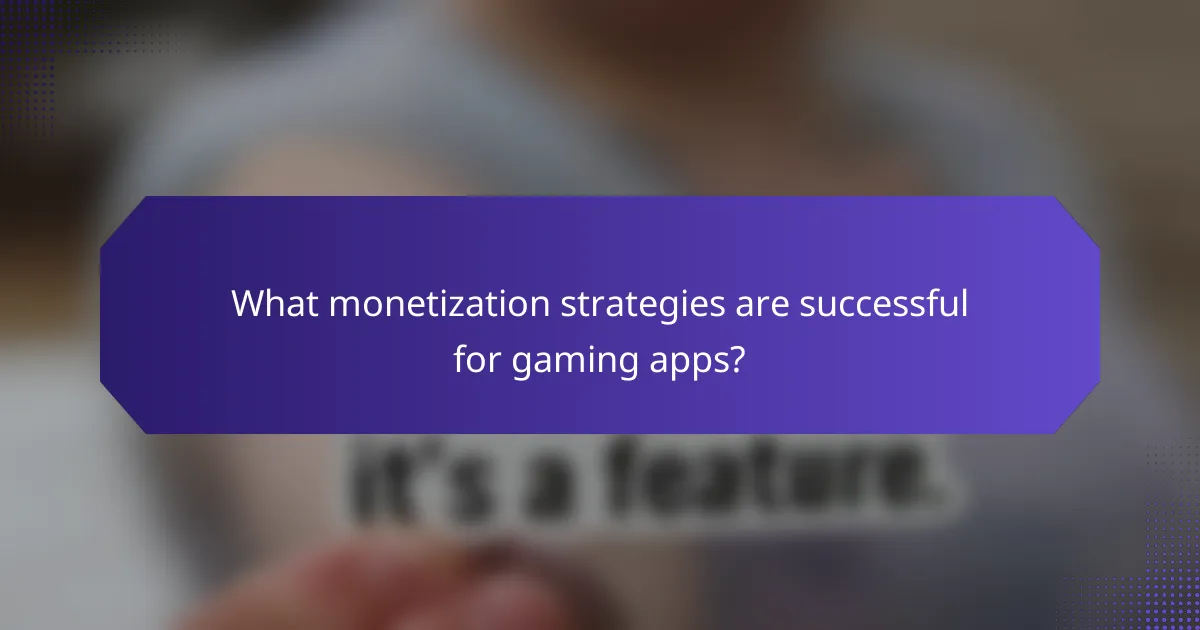
What monetization strategies are successful for gaming apps?
Successful monetization strategies for gaming apps include in-app purchases, subscription models, ad-based revenue, and partnerships with brands. Each method has unique advantages and considerations that can significantly impact user engagement and overall profitability.
In-app purchases
In-app purchases (IAP) allow players to buy virtual goods or enhancements directly within the game. This strategy can boost revenue significantly, especially in free-to-play games where users can access the core experience without upfront costs.
Common examples of IAP include cosmetic items, character upgrades, or additional game levels. Developers should balance the pricing to ensure that purchases feel valuable without alienating players who prefer to play for free.
Subscription models
Subscription models offer players access to exclusive content or features for a recurring fee, typically monthly or annually. This approach can create a steady revenue stream and foster long-term user engagement.
Games like Apple Arcade exemplify this model, providing a library of games for a single subscription price. Developers should consider offering free trials to attract users and demonstrate the value of the subscription.
Ad-based revenue
Ad-based revenue involves displaying advertisements within the game, generating income based on impressions or clicks. This strategy is often used in free games to monetize users who do not make purchases.
Developers should carefully choose ad placements to avoid disrupting gameplay. Balancing ad frequency and user experience is crucial, as excessive ads can lead to player frustration and decreased engagement.
Partnerships with brands
Partnerships with brands can enhance monetization by integrating branded content or promotions within the game. This strategy can attract sponsorships and create unique experiences for players.
For example, a racing game might feature real-world car brands, offering players exclusive vehicles or events. Developers should ensure that brand partnerships align with the game’s theme and audience to maintain authenticity and player interest.

How do graphics quality and user engagement influence monetization?
Graphics quality and user engagement are crucial factors that significantly impact monetization strategies in gaming apps. High-quality visuals attract and retain players, while increased engagement often leads to higher in-app purchases and ad revenue.
High-quality graphics enhance user retention
High-quality graphics create an immersive experience that keeps players coming back. Visually appealing games often lead to longer play sessions, which can increase the likelihood of users making purchases. For example, games with stunning graphics can maintain player interest for weeks or even months, compared to those with basic visuals.
Investing in graphics can be a double-edged sword; while it may increase initial development costs, the potential for higher user retention and monetization can outweigh these expenses. Developers should consider balancing visual fidelity with performance to ensure a smooth experience across various devices.
Engagement drives in-app purchase likelihood
Higher user engagement directly correlates with an increased likelihood of in-app purchases. When players are actively involved in a game, they are more inclined to spend money on virtual goods, upgrades, or additional content. For instance, games that offer regular updates and engaging events can see a significant boost in revenue during these periods.
To enhance engagement, developers should implement features like daily rewards, social sharing options, and competitive elements such as leaderboards. These strategies can create a sense of community and urgency, encouraging players to invest more time and money into the game.

What are the key metrics for measuring user engagement in gaming apps?
Key metrics for measuring user engagement in gaming apps include daily active users (DAU) and session length. These metrics provide insights into how often players return to the game and how long they spend playing, which are crucial for assessing overall engagement and retention strategies.
Daily active users (DAU)
Daily active users (DAU) refers to the number of unique users who engage with a gaming app on a daily basis. This metric is essential for understanding the app’s reach and popularity, as a higher DAU indicates a strong user base and effective retention strategies.
To improve DAU, developers should focus on regular updates, engaging content, and community interaction. For instance, introducing daily challenges or events can encourage players to log in consistently, boosting DAU figures.
Session length
Session length measures the average duration that users spend in a gaming app during a single visit. Longer session lengths typically indicate higher engagement, as players are more invested in the gameplay experience.
To enhance session length, game designers can implement immersive features such as compelling storylines, rewarding gameplay mechanics, and social interactions. Aiming for session lengths of around 20-30 minutes can be effective, but this may vary based on the game genre and target audience.







